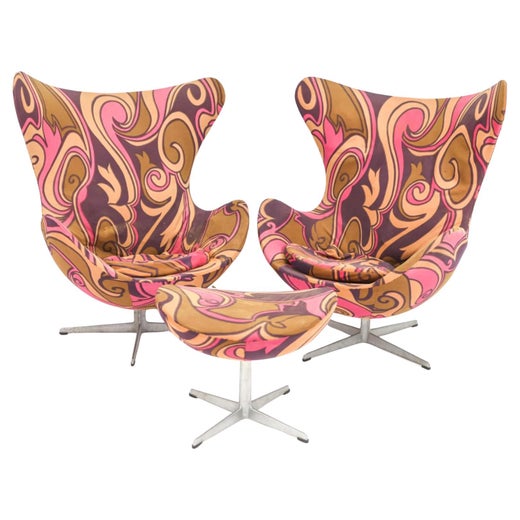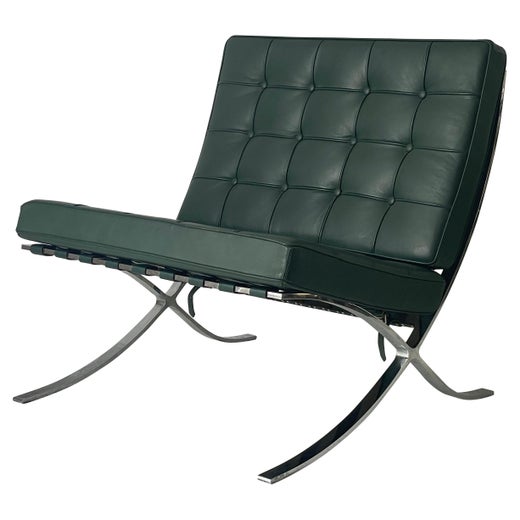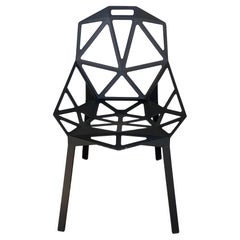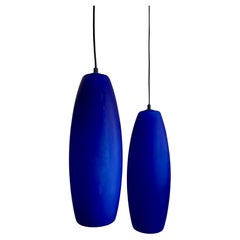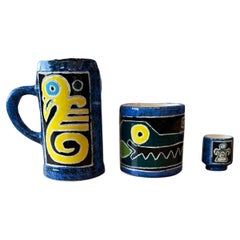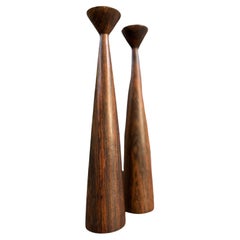Arne Jacobsen Dining Chairs Set of Two by Fritz Hansen
About the Item
- Creator:
- Design:
- Dimensions:Height: 30.52 in (77.5 cm)Width: 19.49 in (49.5 cm)Depth: 20.48 in (52 cm)Seat Height: 16.15 in (41 cm)
- Sold As:Set of 2
- Style:Mid-Century Modern (Of the Period)
- Materials and Techniques:
- Place of Origin:
- Period:1990-1999
- Date of Manufacture:1999
- Condition:Wear consistent with age and use. Minor losses.
- Seller Location:San Pedro Garza Garcia, MX
- Reference Number:1stDibs: LU3330342409982
Arne Jacobsen
The eye-catching work of the Danish architect and designer Arne Jacobsen often introduces new collectors to mid-20th century furniture. With their fluid lines and sculptural presence, Jacobsen’s signature pieces — the elegant Swan chair and the cozy-yet-cutting edge Egg chair, both first presented in 1958 — are iconic representations of both the striking aesthetic of the designers of the era and their concomitant attention to practicality and comfort. Jacobsen designed furniture that had both gravitas and groove.
Though Jacobsen is a paragon of Danish modernism, his approach to design was the least “Danish” of those who are counted as his peers. The designs of Hans Wegner, Finn Juhl, Børge Mogensen and others grew out of their studies as cabinetmakers. They prized skilled craftsmanship and their primary material was carved, turned and joined wood. Jacobsen was first and foremost an architect, and while he shared his colleagues’ devotion to quality of construction, he was far more open to other materials such as metal and fiberglass.
Many of Jacobsen’s best-known pieces had their origin in architectural commissions. His molded-plywood, three-legged Ant chair (1952) was first designed for the cafeteria of a pharmaceutical company headquarters. The tall-backed Oxford chair was made for the use of dons at St. Catherine’s College, Oxford, whose Jacobsen-designed campus opened in 1962 (while still under construction). The Swan, Egg and Drop chairs and the AJ desk lamp were all created as part of Jacobsen’s plan for the SAS Royal Copenhagen Hotel, which opened in 1960. (The hotel has since been redecorated, but one guest room has been preserved with all-Jacobsen accoutrements.)
To Jacobsen’s mind, the chief merit of any design was practicality. He designed the first stainless-steel cutlery set made by the Danish silver company Georg Jensen; Jacobsen’s best-selling chair — the plywood Series 7 — was created to provide lightweight, stackable seating for modern eat-in kitchens. But as you will see from the objects on 1stDibs, style never took a backseat to function in Arne Jacobsen’s work. His work merits a place in any modern design collection.
Find authentic Arne Jacobsen chairs, tables, sofas and other furniture on 1stDibs.
Knoll
As a company that produced many of the most famous and iconic furniture designs of the 20th century, Knoll was a chief influence in the rise of modern design in the United States. Led by Florence Knoll, the firm would draw stellar talents such as Ludwig Mies van der Rohe and Eero Saarinen into its compass. Their work would help change the face of the American home and office.
The company was formed in 1938 by the German immigrant Hans Knoll. He first worked with his fellow ex-pat, the Danish designer Jens Risom, who created furniture with flowing lines made of wood. While Risom served in World War II, in 1943 Knoll met his future wife, Florence Schust. She had studied and worked with eminent emigré leaders of the Bauhaus, including Mies, Walter Gropius and Marcel Breuer. She won Knoll over with Bauhaus notions of industrial arts, and an aesthetic that featured flat and tubular metal frames and angular forms. When Hans died in a car crash in 1955, Florence Knoll was appointed head of the company. It was as much through her holistic approach to design — a core division of the firm was dedicated to planning office systems — as Knoll's mid-century modern furnishings themselves that she brought about the sleek and efficient transformation of the American workplace.
Today, classic Knoll furnishings remain staples of modern design collections and decor. A history of modern design is written in pieces such as the elegant Barcelona chair — created by Mies and Lilly Reich — Saarinen’s pedestal Tulip chair, Breuer’s tubular steel Wassily lounge chair and the grid-patterned Diamond chair by Harry Bertoia.
As you can see from the collection of these designs and other vintage Knoll dining chairs, sofas and tables on 1stDibs, this manufacturer's offerings have become timeless emblems of the progressive spirit and sleek sophistication of the best of modernism.
You May Also Like
21st Century and Contemporary Danish Scandinavian Modern Dining Room Chairs
Leather, Plywood
Vintage 1950s Danish Scandinavian Modern Dining Room Sets
Wood
21st Century and Contemporary Swedish Scandinavian Modern Dining Room Ch...
Leather
Vintage 1970s Danish Mid-Century Modern Dining Room Chairs
Leather
Early 2000s Danish Scandinavian Modern Dining Room Chairs
Leather, Bentwood
1990s Danish Scandinavian Modern Dining Room Chairs
Chrome
Vintage 1950s Italian Mid-Century Modern Chairs
Wood
Vintage 1980s Danish Mid-Century Modern Dining Room Chairs
Steel, Chrome
Vintage 1980s Danish Mid-Century Modern Dining Room Chairs
Steel, Chrome
Mid-20th Century Mid-Century Modern Dining Room Chairs
Aluminum
More From This Seller
View All2010s Italian Organic Modern Dining Room Chairs
Aluminum
Vintage 1970s Chandeliers and Pendants
Murano Glass
Vintage 1970s Mexican Mid-Century Modern Jars
Ceramic
Mid-20th Century Mexican Scandinavian Modern Candlesticks
Hardwood
Vintage 1980s Mexican Mid-Century Modern Rocking Chairs
Bentwood
Vintage 1970s American Mid-Century Modern Lounge Chairs
Metal
Recently Viewed
View AllRead More
The 21 Most Popular Mid-Century Modern Chairs
You know the designs, now get the stories about how they came to be.
Arne Jacobsen’s Egg Chair Scrambled the Idea of What a Wingback Could Be
The curvaceous Egg was designed to cradle the body and offer privacy. Later, it became the seat of choice for bosses in movies, too.
